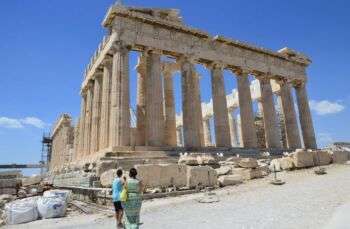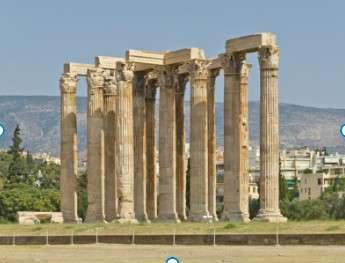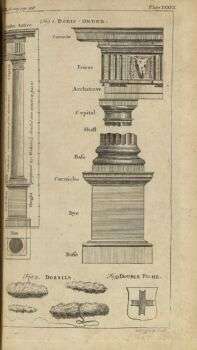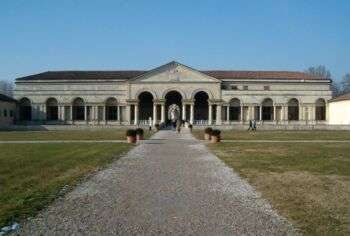The Doric Order, whose name is of Peloponnesian origin, is the style of many important Greek buildings. Even Vitruvius, the roman architect, wrote of it in “De Architectura“.

Image source: https://search.creativecommons.org/photos/4ef7b97f-1004-4aa9-948f-de6daefbb766 by Nataša Stuper
The Origin of the Doric Order
The Doric Order is recognized by its circular capitals at the top of the columns and can be traced back to many important buildings in Ancient Greece. At that time, it became the primary architecture style because it conveyed strength and elegant minimalism. Later, this became really important all over Europe in the following centuries, alongside with Ionic and Corinthian orders.

Image source: https://en.wikipedia.org/wiki/De_architectura
The Importance of Vitruvius
Vitruvius was a Roman architect and writer whose works survived until the Middle Ages. His handbook for Roman architects, “De architectura,” was rediscovered in the 15th century, and is now hailed as a classic architecture authority. Many centuries later, it is possible to find traces of his ideas in many buildings all over the world. His books glorifies and offer details about three important styles born in Greece. In the Renaissance and Baroque periods, they developed an aesthetic canon that had two goals: recalling classical orders while improving them. The coding orders were deeply defined in the sixteenth century by Vignola, in his famous “Rules of Five Orders of Architecture.” It is not a way of returning to the past, but it is a way of dealing with its impact.

Image source: https://search.creativecommons.org/photos/a9238e3f-2337-4610-bcb9-957d5c8befe4 by ubleipzig
Diffusion of the Doric Order
The Doric order was born in Peloponnese, but quickly developed in Greece and become a very important style of architecture in the South Italy colonies. All surviving temples of Ancient Greece and some of the most important contemporary Greek buildings are in this order, including the Parthenon on the Athens Acropolis and the Temple of Zeus at Olympia. The Parthenon dominates the hill over Athens. At the time, goddess Athena Parthenos, also known as “The Virgin,” inspired the structure. It is generally considered the most important example of the Doric order. In the same period, they built the Temple of Zeus in Olympia, which is another important celebration of this architectural style.

Image source: https://search.creativecommons.org/photos/33ff118b-5219-417c-b62b-98055369a68d by A.Savin (Wikimedia Commons · WikiPhotoSpace)
The Characteristics of the Order
The Doric Order can be recognized by the features that can be found in a Doric Temple, for example:
- Euthynteria: the platform of the temple, laid on the foundation
- Crepidoma: a platform on the basis of the temple, formed by steps leading to the temple
- The shaft of the column put on crepidoma. It has grooves with a sharp edge and is tapered from the bottom to the top
- The capital, which consists of two elements :
- The echino, with a truncated cone shape.
- The abacus, a simple marble slab.
- Above the capital can be seen the entablature, that features a lintel on which the frieze lays directly
- metopes: marble slabs decorated in bas-relief
- triglyphs: rectangles vertically furrowed by three channels

Image source: https://search.creativecommons.org/photos/4a522744-16e9-4e4a-a3e4-8692e446285f by It’s No Game

Image source: https://search.creativecommons.org/photos/871a5d99-a223-4c7e-8a23-106bbb449944 by Biblioteca Rector Machado y Nuñez
The Doric Style Today
Many architects, over the centuries, took inspiration from the Doric way of conceiving architecture, especially those in Italy. Palazzo Te, a building in Mantova, is a homage to Greek architecture of the Doric period. Federico II Gonzaga firmly wanted to build a palace with Doric features and commissioned Julio Roman to it.
Doric features found in this building:
– in the external facades, with smooth pilasters (pillars embedded in a wall).
– the inner courtyard is also a Doric Order feature. Here there are marble columns, left almost raw, and surmounted by a mighty Doric entablature.

Image source: https://search.creativecommons.org/photos/413f8268-bfea-4c74-b15c-152252b520f9 by Marcok
Info source:
